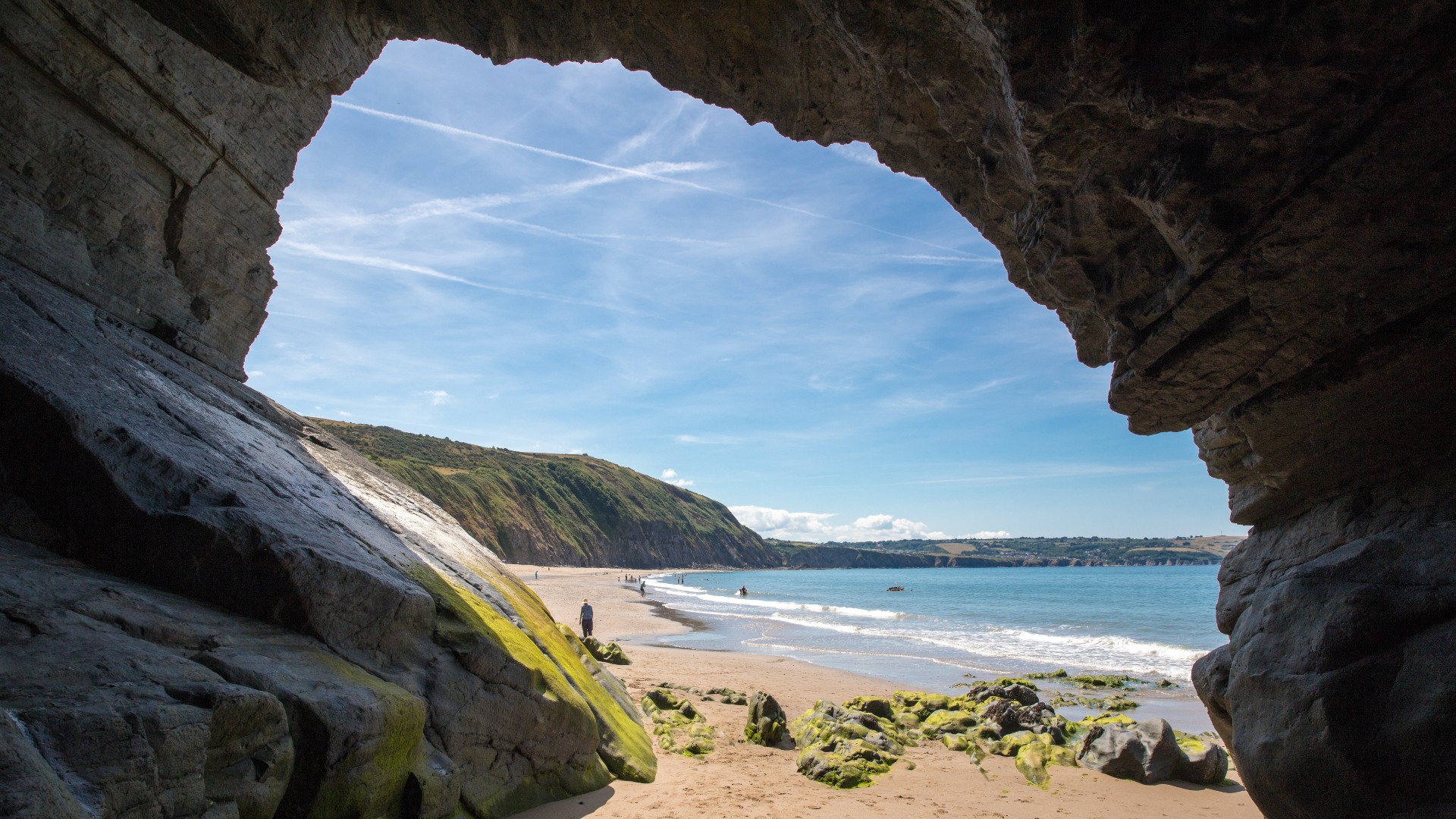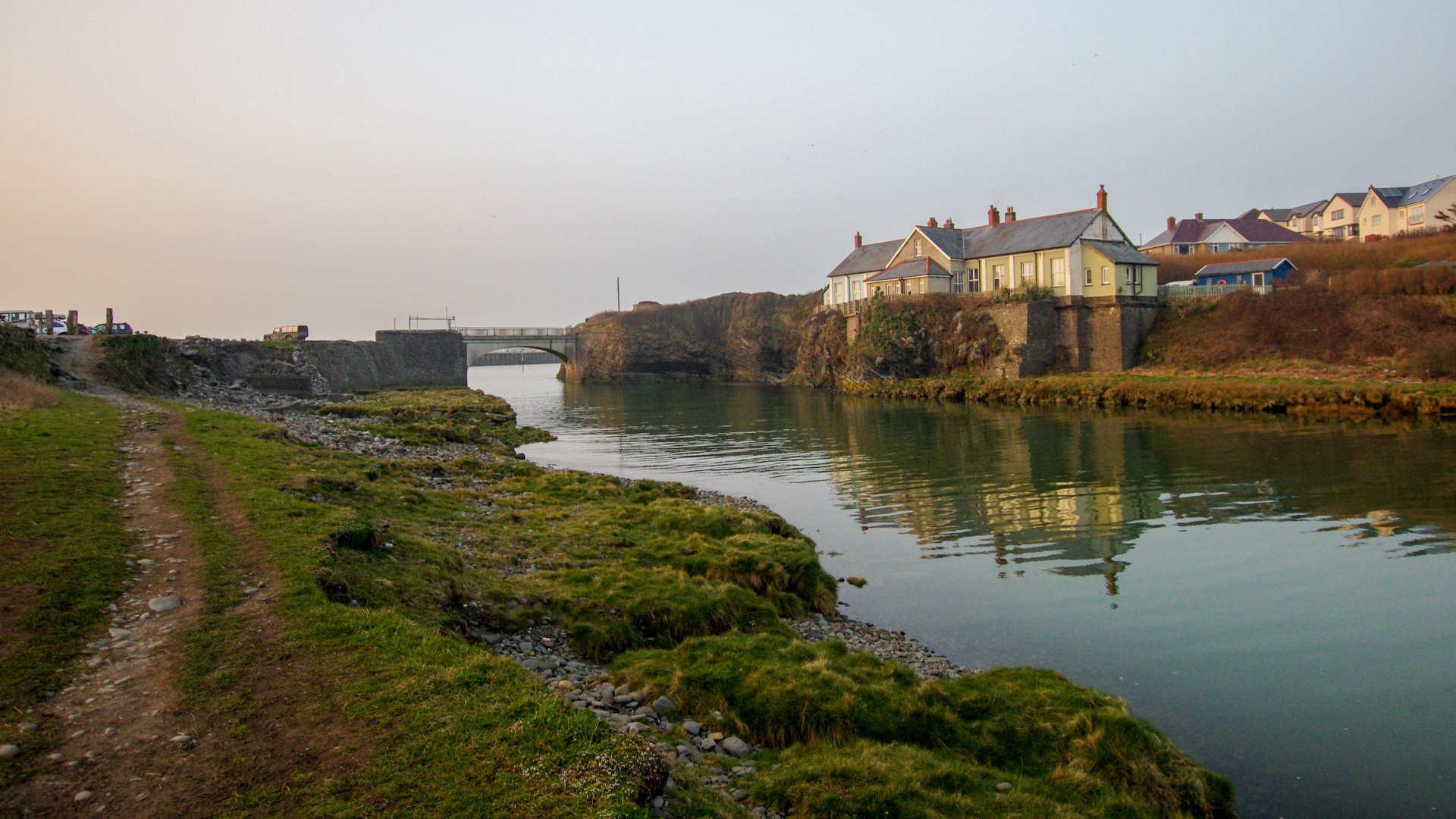Medieval map of Britain may reveal evidence of mythological islands
The 650-year-old map shows two long lost islands.

A faded medieval map of Britain may reveal evidence of "long lost" islands detailed in Welsh mythology, a new study finds.
Researchers discovered the "missing" islands after analyzing the 650-year-old Gough map, which is now housed in the Bodleian Library at the University of Oxford. In the area now known as Cardigan Bay, in Wales, the map shows two islands that no longer exist, study co-researchers Simon Haslett and Davis Willis wrote in a study published in the June issue of the journal Atlantic Geoscience.
It's likely that the islands existed in the 14th century, when a cartographer created the map, and were the remains of a much larger land known in Welsh mythology as "Cantre'r Gwaelod" or "Maes Gwyddno." Due to erosion, this land was eventually swallowed up by the ocean over a period of centuries, according to mythology, the researchers wrote in the study.
However, while some researchers think the Gough map (which can be viewed online here) may be solid evidence of these mythological islands, not everyone agrees with the team's findings.
Related: Why is the world map you know wrong?
Lost land?
According to Welsh mythology, the drowned land of Cantre'r Gwaelod had a ruler before the ocean washed it away.
"In recent [in the last few centuries] folklore, Gwyddno is presented as the ruler of Cantre'r Gwaelod and the inundation is the result of the negligence of the drunken gatekeeper, Seithiennin," Haslett, an honorary professor of science and engineering at Swansea University in Wales, and Willis, the Jesus professor of Celtic at University of Oxford's Jesus College, wrote in the paper.
Sign up for the Live Science daily newsletter now
Get the world’s most fascinating discoveries delivered straight to your inbox.
The duo also investigated other early sources for mentions of Cantre'r Gwaelod and found that the ancient writer Ptolemy (lived circa A.D. 100 to 170 in Roman Egypt) wrote coordinates in his "Geographia" that suggest that the coastline of Cardigan Bay was farther west than it is located now, Haslett and Willis noted in the article. In essence, Ptolemy's description suggests that the Welsh shoreline has eroded substantially over the millennia.

"Ptolemy provided a coordinate that suggests the mouth of the River Ystwyth lay further westward than it is today and, if it is correct, then one might expect the river to have flowed across a landscape that lay to the west of the present coastline," Haslett told Live Science in an email.
The team also noted that the erosion of the shoreline of Cardigan Bay continues today, with shore sediments being soft enough that the ocean can gradually erode them.
The sixth-century British monk Gildas noted the unrelenting sea in his Latin sermon "On the Ruin and Conquest of Britain." In this sermon, Gildas described how people living near Cardigan Bay were caught between an invading force and an unruly sea.
"The barbarians drive us to the sea; the sea throws us back on the barbarians: thus two modes of death await us, we are either slain or drowned," Gildas wrote, describing the plight of those caught in the conflict. Haslett and Willis said this writing may record a time when a natural disaster, such as a storm surge or tsunami, worsened the erosion problem and caused a sizable amount of land to suddenly flood.
Research is ongoing, and more evidence of this lost land may be found in the future. "We are planning to undertake geographical surveys along the present coastline of Cardigan Bay to see if further evidence into the post-glacial evolution of the coastline might be collected," Haslett said.
Are the islands the mythological Welsh land?
Live Science contacted several experts not affiliated with the research to get their thoughts on the study. While some of the scholars were supportive of the findings, others were skeptical.
Catherine Delano-Smith, a senior research fellow at the University of London's Institute of Historical Research, said the Gough map was a poor source for finding lost islands in Cardigan Bay. "The Gough Map cannot be used to 'prove' the existence of 'lost' islands," Delano-Smith told Live Science in an email. In fact, the map indicates that whoever created it had a poor knowledge of the geography of Wales, as "Cardigan Bay is not shown at all," Delano-Smith said.
That's not the cartographer's only mistake. The Gough map shows a number of islands off Britain, but they are inaccurate. "Only a notional selection of islands is given, represented as rough circles and ellipses of disproportionate size arbitrarily distributed all around the coasts of Britain," Delano-Smith said.
While Delano-Smith didn't completely rule out the possibility that the two islands the researchers refer to represent lost islands off Wales, she was skeptical. "The Gough Map has no place in a geomorphological discussion of post-glacial coastal evolution," Delano-Smith said.
Other scholars were more optimistic about the accuracy of the results. "With regard to the study of 'lost' islands in Cardigan Bay, I absolutely think it is correct," Patrick Nunn, a geography professor at the University of the Sunshine Coast in Australia, told Live Science in an email. Nunn said that, in his book "The Edge of Memory: Ancient Stories, Oral Tradition and the Post-Glacial World" (Bloomsbury, 2018), he estimated the stories about Cantre'r Gwaelod date back at least 9,000 years.
Roland Gehrels, a professor and head of the Department of Environment and Geography at the University of York in the U.K., was cautiously optimistic about the finds. "I would say that [the] findings of the paper are accurate," Gehrels told Live Science in an email.
Editor's note: Updated at 2:28 p.m. EDT to remove a line casting doubt on whether a tsunami worsened the erosion problem.
Originally published on Live Science.

Owen Jarus is a regular contributor to Live Science who writes about archaeology and humans' past. He has also written for The Independent (UK), The Canadian Press (CP) and The Associated Press (AP), among others. Owen has a bachelor of arts degree from the University of Toronto and a journalism degree from Ryerson University.









